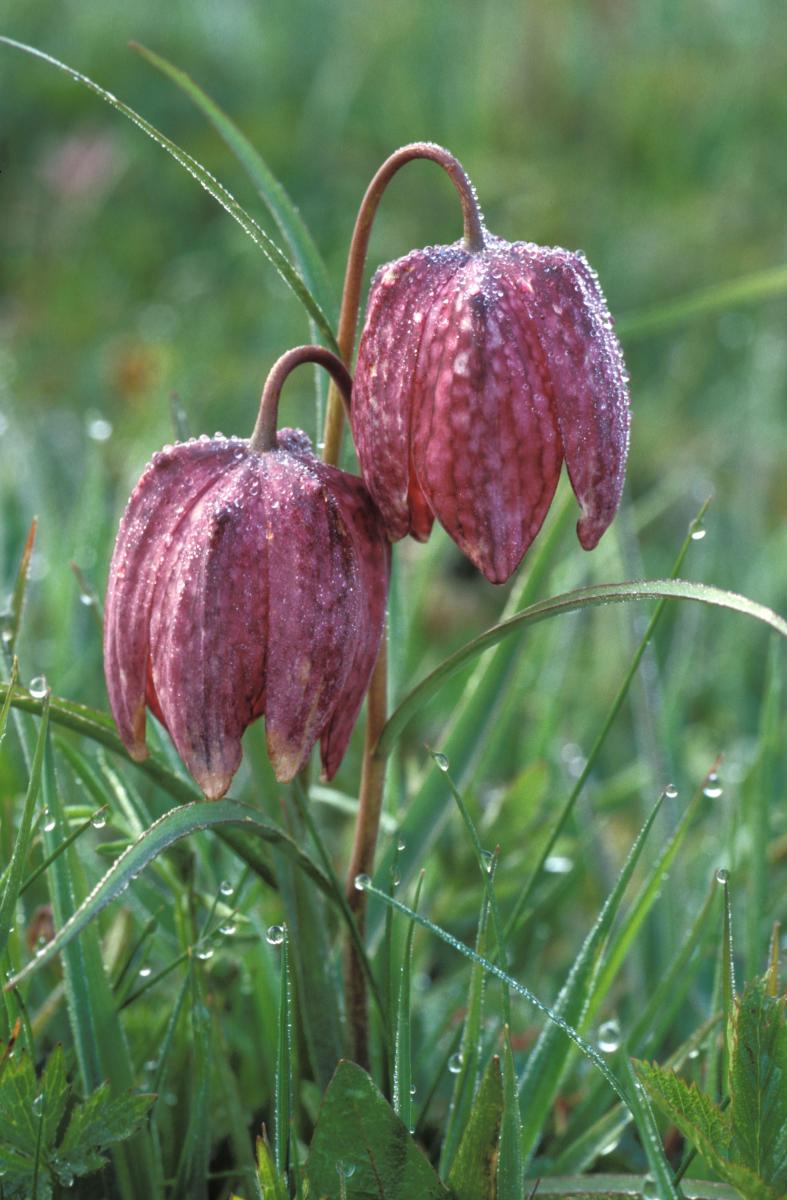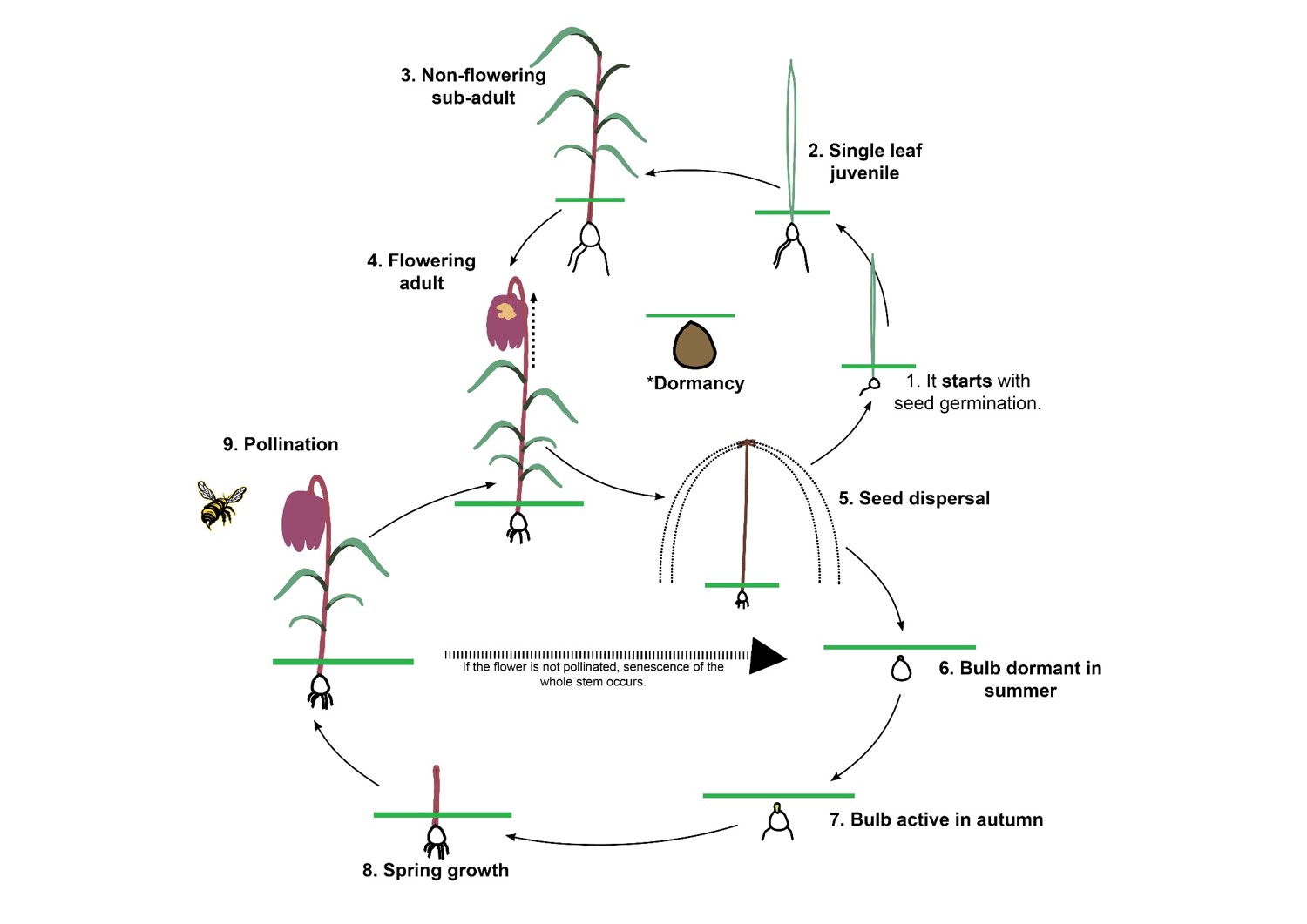
A number of threatened and rare plants also occur in floodplain meadows. Most well known is the snakeshead fritillary (Fritillaria meleagris), a beautiful species found on a handful of meadows in Southern England and the Midlands. Only a few sites in the UK are considered to hold wild populations, although many sites have had the plants introduced.
Watch our podcast on You Tube about our annual fritillary count and if you would like to volunteer please contact us as we are always keen to hear from volunteers interested in this event.
See our poster about our research from the British Ecological Society conference in 2017 here.
You can also download our fritillary leaflet for more information.
See our recent publication about fritillary dormancy here
We are pleased to share the video from our winter workshop which took place online on Wednesday 02 March from 6pm to 8pm https://www.youtube.com/watch?v=8HOqotGPo5Q
Recording snake's-head fritillaries at North Meadow National Nature Reserve
North Meadow holds the UK’s largest population of these stunning wildflowers and this count takes place at the time of peak flowering in mid April every year undertaken by a team of volunteers. The Floodplain Meadows Partnership, along with Natural England and volunteers have been recording the change in the population of snakeshead fritillary at North Meadow NNR, since the 1970s. This study, which uses fixed-point quadrats to sample the population of fritillaries has revealed a strong relationship between the presence of plants and flooding in the previous season. In 2012, the meadow was underwater almost continually for ten months; the following year in 2013, only five plants were found. In 2014 plant numbers were back to over 1000, although more vegetative plants were found compared to flowering plants. This demonstrates that the species responds to extreme conditions with a period of dormancy. See below for a life cycle of the fritillary.

The Flight of the Fritillary
In 2012 we expanded our snakeshead fritillary counting exercise to two new sites (Lugg Meadows in Herefordshire, and Clattinger Farm, in Wiltshire). As it is likely that bumblebees are the main snakeshead fritillary pollinator and as they are declining in the wider countryside, we teamed up with the Bumblebee Conservation Trust to try and establish bumblebee surveys on all three sites. The project has officially finished now (2018), but the volunteer bee surveyors counters are contining to record data.
We cannot collect such an extensive amount of data without you, so please do get in touch and join in. We also need more volunteers to help with the bumblebee surveys. Training will be given and no previous experience is necessary. This is a lovely opportunity to come and sit in a fabulous meadow counting flowers and contributing to real scientific data collection. Send us an email (Floodplain-Meadows-Project@open.ac.uk) if you are interested and we will provide further details.
The 2022 count will take plce on 26th April 2022. let us know if you want to join us at Floodplain-Meadows-Project@open.ac.uk
More research
Researchers at the University of Pannonia, Hungary, have been looking at data from 300 years of management on Hungarian floodplain meadow habitats for the rare species Fritillaria Meleagris.
Click here to see the poster, which was displayed at our 2017 Floodplain Meadows Partnership conference.
We recently published this paper, usingh the data collected from our annual volunteer count. Volunteers are great and we have learnt new scientifici information as a result. New paper on dormancy in F. meleagris here (Jan 2020)